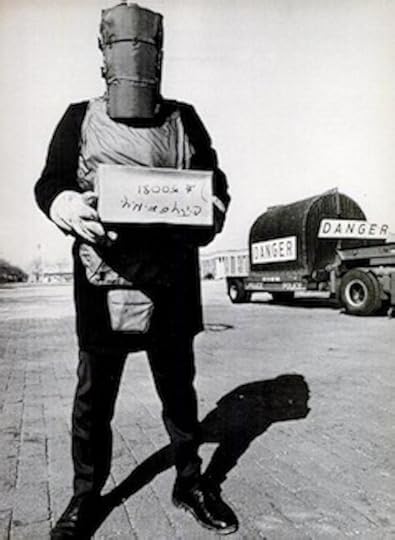The Evolution of Bomb-Squad Armor

One thing my book research has taught me is that America used to have a serious problem with bombs. Every time I delve into the news archives from the early 1970s, I come away amazed at number of stories involving homemade explosive devices going off a nightclubs, bus depots, and Mafia social clubs. And I'm equally floored by the major cojones exhibited by the bomb-disposal experts who handled unexploded ordnance in that era, mostly because they operated with the most rudimentary of armor.
Though Kevlar was invented in the mid-1960s, it didn't became a standard component of armor until much later. Bomb squad members in the early 1970s thus had to make do with the get-ups you see above, which consisted of material no tougher than the standard military flak jacket. Note the shoes, in particular; bomb shrapnel is a great threat to the most distant human extremities, yet members of the New York City Police Department's explosives disposal squad did their dirty work in wingtips. (To their credit, though, the armor's designers installed a flap to protect the privates, another area frequently damaged by flying debris.)
This 1973 Navy study (PDF) actually vouches for the effectiveness of the armor, though you have to read closely to understand the important caveat: the armor only really worked when combined with a blast shield. Yet in reading contemporary accounts of early 1970s' bomb-disposal work, I have rarely come across descriptions of such shields; it seems the cops of that era liked to roll the dice.
Since then, of course, great thought has gone into developing the massive suits or armor that we're all familiar with today. The first great advance came in 1976, with this "personal blast protection armor." And the equipment has only gotten bulkier from there.
Tough to move around in, sure. But vastly preferable to the options in the early 1970s—or, for that matter, in 1922.




